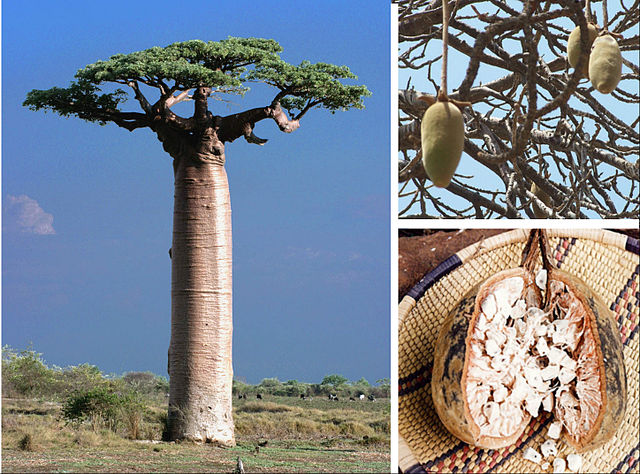Originally published September 26, 2024. It might be gnarled and imposing, but baobab (Adansonia digitata L.) or “tree of life” is lately improving income in Zimbabwe. This follows a rise in import demand of the tree’s fruit produce from Western food and health brands.
With a 5-million local baobab tree population according to the governmental export body, Zimtrade, Zimbabwe is surely sitting on tree riches.
European and American markets for baobab fruit-based products are trailblazing this new harvest craze for cash sales.
Coca-Cola is ordering the fruit’s shells and pulp to make dietary drinks while in Europe pulp powder is costing a fortune.
As of September 2024, a 1 kg packet of powder was retailing at 27 euro ($30.08) in countries like Germany. Across the English Channel, a 100 ml baobab lotion was fetching £25 ($33.37) in the UK during the same period.
Not in Zimbabwe
Meanwhile, producers in Zimbabwe whose produce undergoes rigorous origin tracing can hardly buy the beauty products their produce makes.
Loveness Bhitoni, a harvester, gets just enough from her hard shell collection to buy maize meal, according to the Associated Press.
At $0.17 per kg, it takes 5 fruit sacks to generate money to buy a 10-kg maize flour bundle.
Funnily enough, crafty middlemen sometimes induce harvesters to exchange 20 liters of broken fruits for maize flour.
In Africa
The African Baobab Alliance nevertheless estimates that a million village women across Africa could gain from the emerging trade.
According to the continent-wide alliance, thousands of harvesters in different countries are trying to meet the growing demand.
Other regions such as the horn of Africa that includes Kenya, the Sahel and West Africa, particularly Senegal, are following on.
The Baobab Fruit
In profile, the baobab fruit is an oblong-shaped giant that measures 53 cm in length and 20 cm wide.
To reach it, harvesters have to claw their way up its host’s thick trunk, though sometimes the fruit falls naturally.
So, as harvesters wallow in poverty, the “tree of life” is enriching its foreign buyers. But as the industry grows, there is promise that gatherers could benefit, too. To learn more on the status of the exotic tree in Zimbabwe and Africa, here are extra statistics.
Africa Baobab Statistics
Baobab trees are native to Africa and cover the latitude magnitude between 16ºN and 16ºS, across 32 nations. Their fruits have been a food source for generations in countries as diverse as Benin, Cameroon, Mali and Zimbabwe, among others. The ground fruit produces solvent drinks with juice-like flavor while the pulp seasons foods, even as seeds make vegetable oil. In total, there are 300 documented uses of baobab trees, a major one being timber production.
What is the lifespan of baobab trees?
Besides being some of the largest trees in the world, baobab also rank among the oldest. Carbon dating puts some specimen at between 1,000 and 2,500 years of age.
How are baobab trees distributed by region in Africa?
The southern African region leads the total living stock. In Zimbabwe alone, there are around 4 million adult trees, according to The Conversation or 5 million trees, per Zimtrade. The Sahel, which covers 2.8 million km2 of dry land in North Africa, comes next, at about 2.8 million trees. This according to a 2024 estimate on the journal Nature. Interestingly, the study warrants the availability of at least 1 tree near 94% of the Sahel region’s rural homes. In Kenya in East Africa, the main areas of baobab growth are the wildlife-rich coastal and lower eastern midlands.
What is the current value of the Western market for baobab powder?
The Netherlands’ Center for the Promotion of Imports projects the world’s baobab powder market to be worth $10 billion by 2027. Baobab fruit products emerged as a superfood after the European Union and the U.S. legalized baobab powder imports in the late 2000s.
